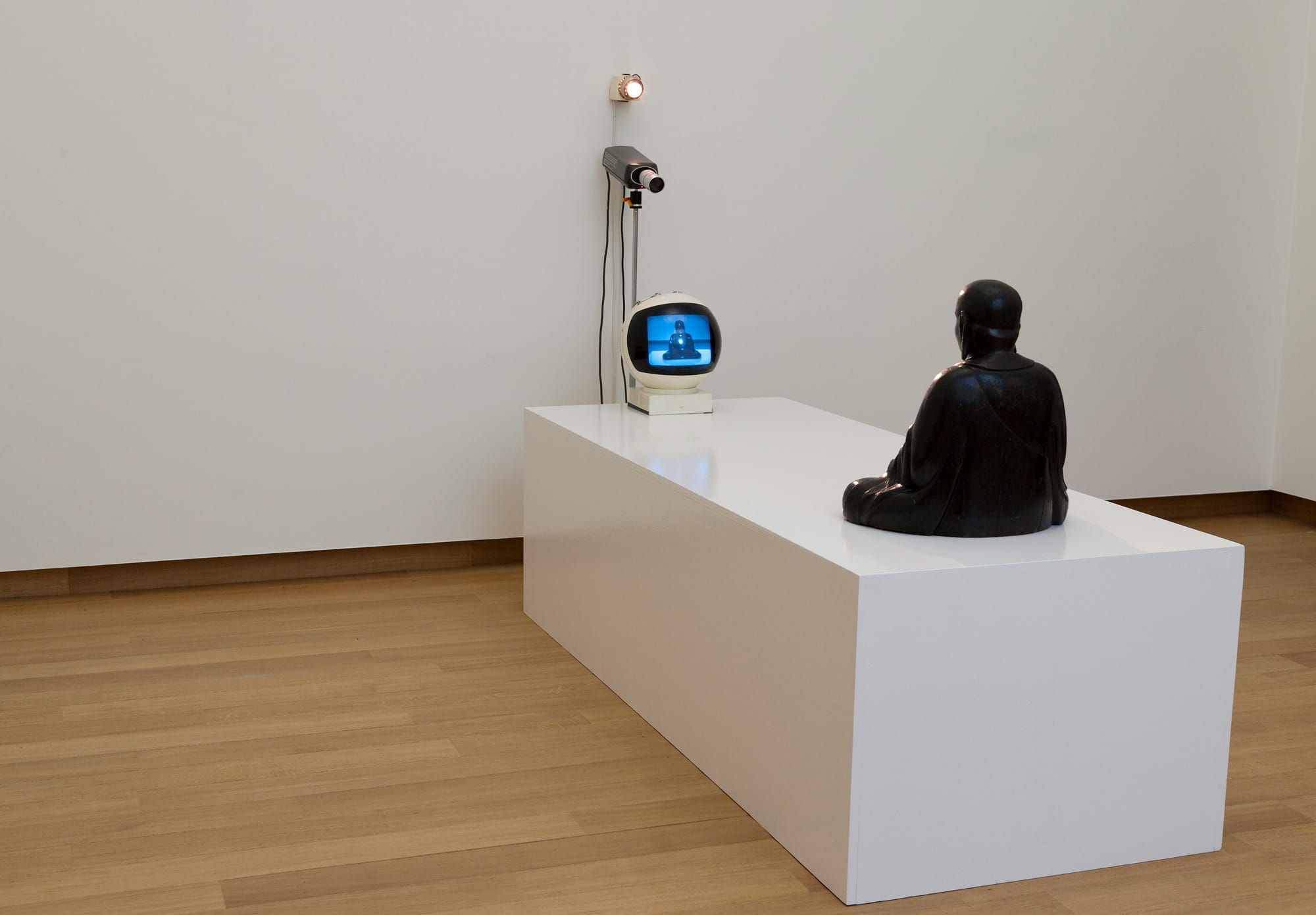NAM JUNE PAIK:
THE FUTURE IS NOW
THE FUTURE IS NOW
— Nam June Paik
“Marcel Duchamp had already done everything—except video ... only through video art can we go beyond Marcel Duchamp.”
1975“Marcel Duchamp had already done everything—except video ... only through video art can we go beyond Marcel Duchamp.”
1975“Marcel Duchamp had already done everything—except video ... only through video art can we go beyond Marcel Duchamp.”
1975“Marcel Duchamp had already done everything—except video ... only through video art can we go beyond Marcel Duchamp.”
1975“Marcel Duchamp had already done everything—except video ... only through video art can we go beyond Marcel Duchamp.”
1975“Marcel Duchamp had already done everything—except video ... only through video art can we go beyond Marcel Duchamp.”
1975“The Yellow peril! C’est moi.”
1963–1964- Filter

TV Buddha
Content Type
Artwork
Artist
Nam June PaikDating
1974Medium
Closed-circuit video installation with wooden sculpture, monitor and video camera
Video, single channel, 4:3 format, live feed
Dimensions variable
Credits
Collection of Stedelijk Museum Amsterdam
Image © Stedelijk Museum Amsterdam
One of Nam June Paik’s most iconic works, TV Buddha expresses the contrasts and parallels between East and West and between technology and spirituality in a very simple and direct way. A CCTV camera films a Buddha statue, which Paik bought from an antique store. Its static, silent image appears live on a round TV set, inspired by popular sci-fi imagery. Here the Buddha is both the viewer and the viewed image, mirroring our own experience as mass media consumers.